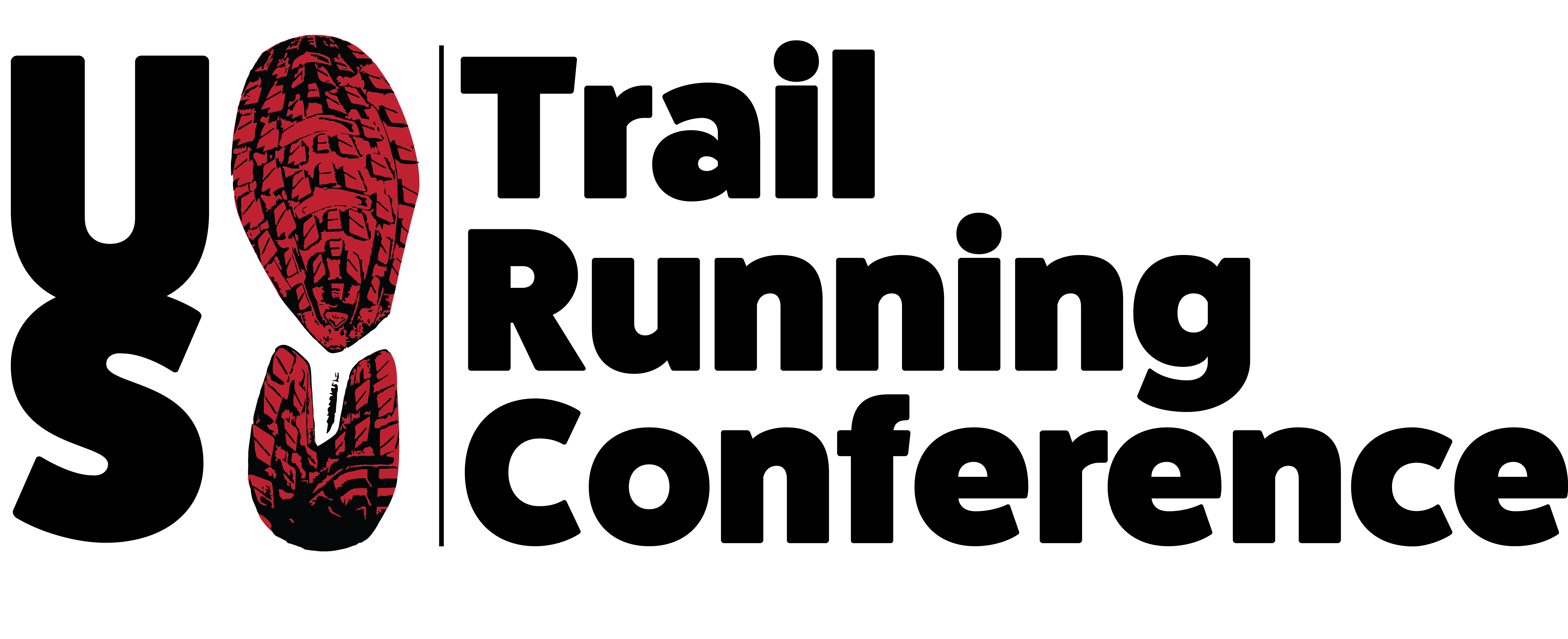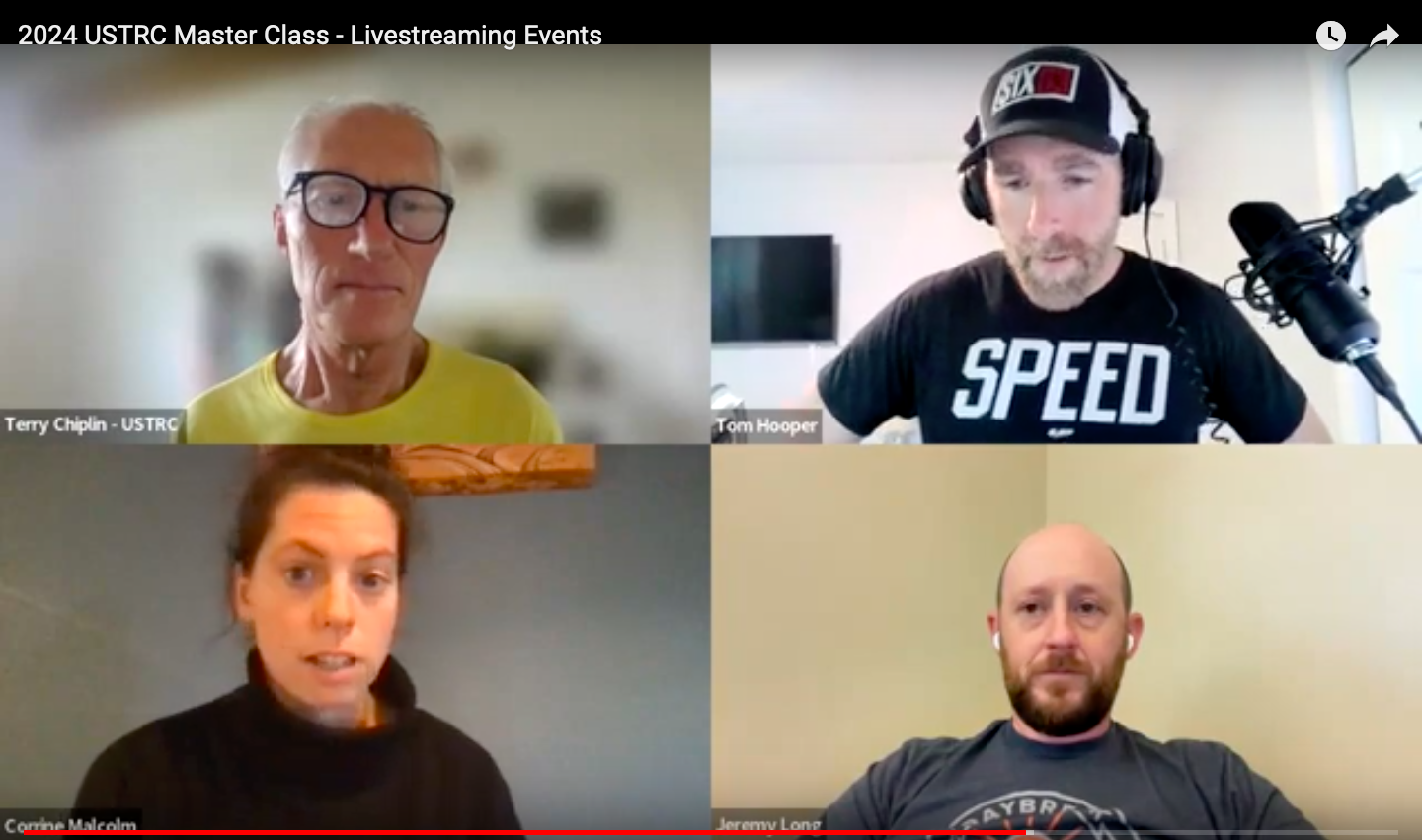Live Streaming technology is available for race directors to expand coverage for their events
Mastering Livestreaming for your Event was the subject for the fifth webinar in the nine-webinar RD Master Class series produced by the US Trail Running Conference presented by Marathon Printing, and was live on Tuesday, May 28. The webinar series is free for all race directors and event organizers to access, and is held in partnership with the American Trail Running Association.
This webinar’s panelists featured three industry professionals that have all explored using live streaming for their own or clients’ races. Tom Hooper, Six03Endurance, Corrine Malcolm, FreeTrail, and Jeremy Long, Daybreak Racing. Terry Chiplin, founder of the US Trail Running Conference, was the moderator for the session.
Chiplin prefaced the session with compelling data from recent live streams from races in North America. The 2024 Western States 100 Lottery amassed 17,000 views. In 2021, the WS100 race attracted 5,850 views. The 20222 edition grew to 148,000 views, and the 2023 version grew further to 256,000 views. The 2023 Cocodona 250 livestream garnered around 30,000 views per day over the multi-day event that winds its way across Arizona. It is clear that live streaming trail events have the potential to attract a significant audience.
This RD Master Class webinar was created to give race directors and event organizers ideas for how they could tap into this potential marketing medium opportunity.
Tom Hooper opened the session by outlining how he first started with live streaming for his races, “In 2022, we wanted to try out the StreamYard platform..Loon Mountain race was the next championship in a couple of weeks….we tried to figure it out. There are always challenges with software with no cell service, especially way up in the mountains. Basically we trialed and errored it; tried to figure out how we can modify some software to make it work. Races like WS100 and Broken Arrow are big productions, and most races can’t do that. We are more on the mom-and-pop side of races.
“In 2023, we had the Sunapee Scramble and it went so much better. We had a team that was spread out doing the broadcast from around the country, while we had the cameras set up in NH. We also started to work out how the software could run for us. Then we looked at how to fill any space with pre-recorded videos to make it more exciting.”
Corrine Malcolm explained how she came to be involved in live streaming events, “I am not on the producing end of these productions, I am the co-commentator or host for the weekend. I have also organized the logistics around data collection, or host management for an event.”
Malcolm first got into the commentary booth back in 2018 at UTMB. Then the pandemic hit and when she had an injury and was not able to race she became available to commentate for other races. She was in-person on the ground set up in a booth in proximity to the finish line for Western States, UTMB and Broken Arrow. “Within the next year UTMB decided to set up the event so it would stream remotely…I have been able to see different races take on live streaming in a bunch of different ways, including working a lot now with Mountain Outpost and Aravaipa races…definitely every organization has their own take on how to procure data and set up a live stream, how many moving pieces there are in the puzzle, and professional teams that are hired to produce the back end of the event…versus very minimal infrastructure. It has definitely grown, and I think we are moving past that any live broadcast is a good live broadcast, and we are moving towards these are the standards we want to hit. From imagery to audio quality, to the hosts that are on the mic.”
“A lot of the races in the US in particular are streamed in really remote locations, where it is really challenging getting data despite using things like Starlink. In 2021, WS100 started using Starlink, and we are still using this service. We are often talking over still images on the screen, or no images at all. We have found that the audio quality is most important as people may be listening to the audio while they are doing chores around the house. We will see numbers drop off if the audio quality is poor, whereas we don’t see numbers decline with poor video quality. I think this opens up the opportunity for mom-and-pop races as it’s not necessary to capture the best-ever images. You can set up a key aid station and start and finish lines where you do have visuals but then have really good audio the entire time. I think that can elevate having a minimum or a lack of good visuals.”
Jeremy Long shared how he started live streaming with his races, “In 2021 we took some of our events that had actual cell coverage, and we stitched together a bunch of Instagram live and recorded a bunch of Instagram stories. When we had a bar of data we would upload those in chronological order, essentially providing chronological coverage of our 50ks and 100ks on Mount Hood in particular.
“Fast forward to 2022 and our partnership with FreeTrail, and our Gorge waterfalls Race – FreeTrail rallied a bunch of friends and co-ordinated a run of show in terms of how they wanted to record, and everyone has access to the FreeTrail Instagram. They followed live coverage throughout the day, and then we were able to archive it. Fast forward to 2024, and Dylan Bowman’s magnetic presence enabled us to harvest enough sponsorship money to afford a contract with Mountain Outpost for them to do the live stream for the Big Alta this past February and the Gorge Waterfalls race six weeks later. They were both full production live streams from Mountain Outpost, a group that has been conducting livestreams for the last 18 months to two years.”
Corrine Malcolm added, “The field of live streaming in trail running has benefited specifically from people like Jamil Coury who just had a vision and a dream and didn’t really care about making money . I think we are very fortunate that we are living in the Jamil era.”
Jeremy Long wrapped up with these comments: For two of our higher profile events we were able to fund these contracted live streams and the analytics alone that we have seen from those two events have been fairly staggering in terms of the viewership and the familiarity of our events through having these sessions, and then of course they are archived as well.”
Lively discussion took place with several preset questions for the panelists as well as questions from the live audience. Areas covered included the differences in progress between live streaming at European and US events, the number of volunteers needed to make a live stream happen for a smaller race; drone footage and operators as well as camera runners.
There was also discussion on whether it was best for a race to focus on one single platform to share a live stream, and YouTube seemed to be recognized as the most stable among platforms rather than spreading across various channels. Starlinks were also noted to give access to other useful areas for race directors that made life easier across the board. With live streaming being in its “infancy” what is the priority list for the path forward from here? What is it that is most urgent to address, and how can we also standardize the quality of information available to operators during a live stream. There is also a responsibility for live stream providers to make sure that coverage among the race field is equitable and that data shared is true and accurate. There was also discussion on whether athletes had pushed back on being live streamed at events.
Active at Altitude, organizers of the US Trail Running Conference and the webinar series, reported 180 participants registered for the session, representing 40 states, as well as Bolivia, Canada, Great Britain, Iceland, Macedonia, Russia and Saudi Arabia.
The next webinar in the RD Master Class series presented by Marathon Printing is titled: Mastering Course Marking for Your Race, and takes place on Tuesday, June 25, 2024, from 10.00 a.m. to 11.00 a.m. MST. Panelists for this session are Kim Levinsky, Sassquad Trail Running, Noah Bloom, RunGo app, and Markus Kemetter, Coros.
Who is this for? Race directors and event organizers who are interested in how to master course marking using the latest concepts for your race or races .
Registration is free – see https://ustrailrunningconference.com/webinar-series/ for more details.
More info:
For details on the US Trail Running Conference and the webinar series, go to https://ustrailrunningconference.com/webinar-series/
Contact Event Director, Terry Chiplin for further information, terry@ustrailrunningconference.com, or + 33 06 79 76 31 53
#TrailConference #trailrunning #visitknoxsports #knoxville #marathonprinting #activeataltitude #atra #TrailConference2024













